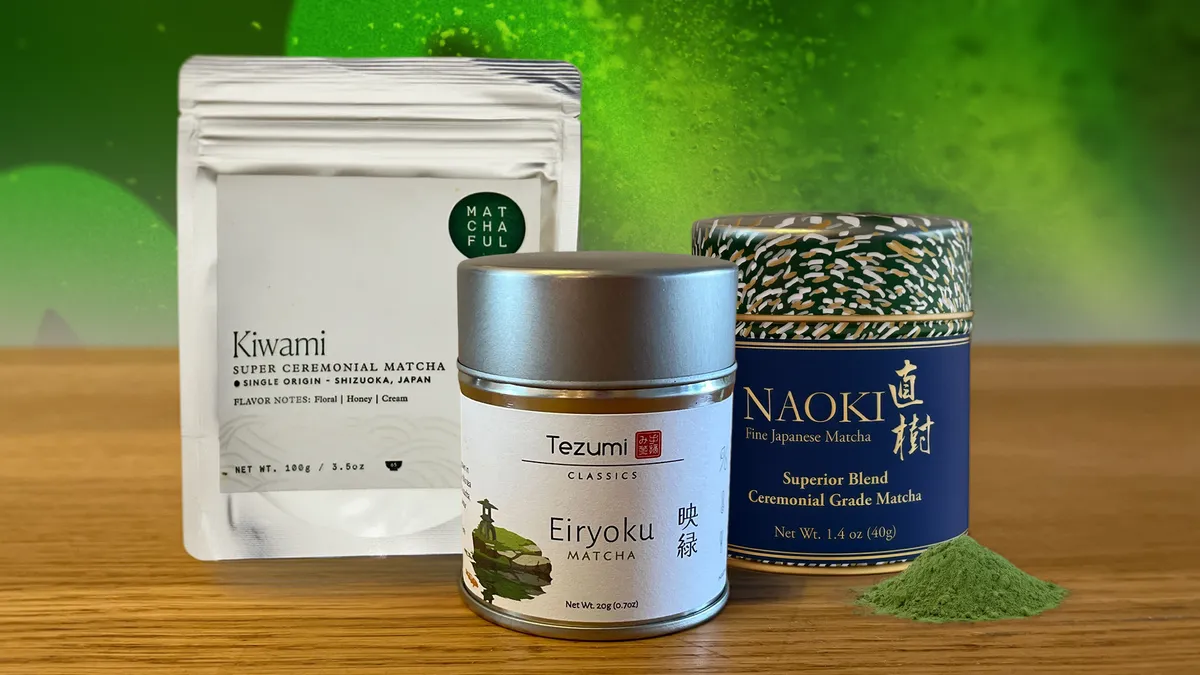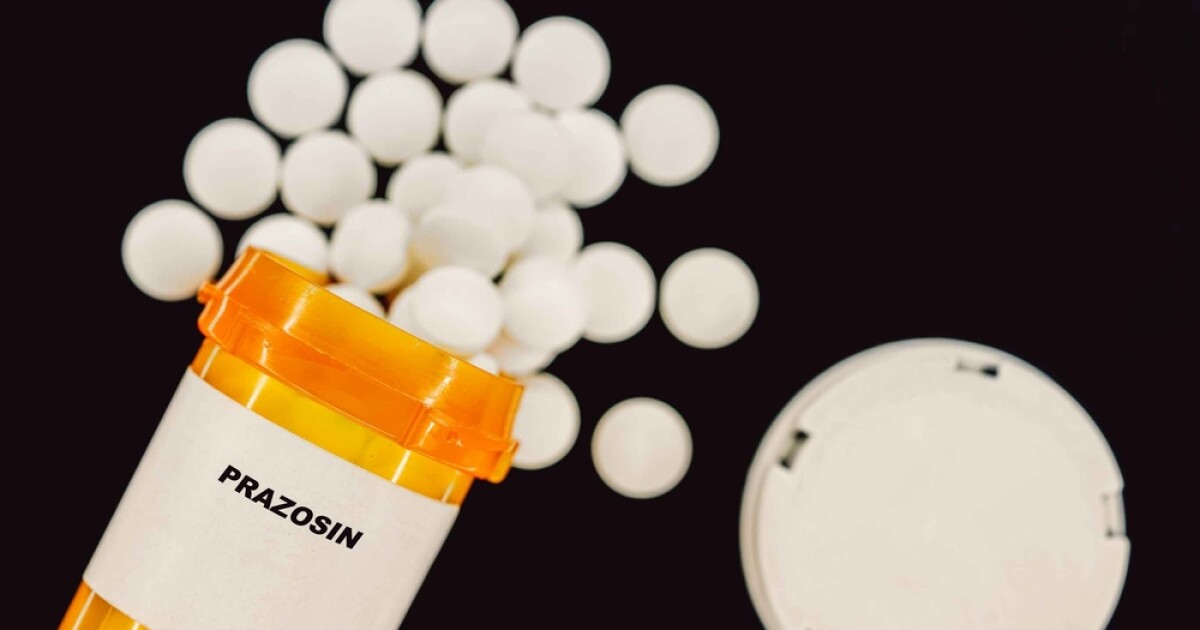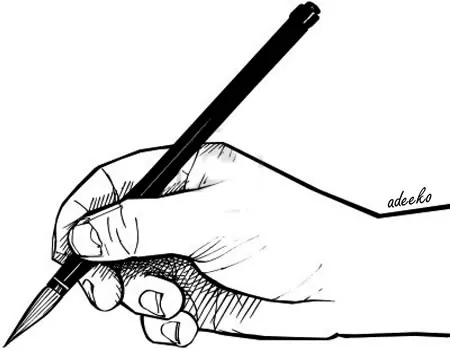Copyright CNET

vs Compare Back to selection I started drinking coffee in college, usually when I was cramming for a test or meeting friends in the morning at our favorite local shop. But no matter how many years I drank coffee or how many caramel macchiatos I treated myself to, I would always end up a bit jittery. About a year and a half ago, I dove headfirst into the world of matcha to see if it would help ease my caffeine jitters while still giving me a much-needed morning boost of energy. I haven’t looked back since. Our Picks Best overall matcha powder Eiryoku Matcha from Tezumi Jump to details Jump to details Another great option Naoki Matcha Superior Blend Jump to details Jump to details Best premium matcha powder Kiwami Single Cultivar Matcha from Matchaful Jump to details Jump to details Best budget matcha powder Rishi Everyday Matcha Jump to details Jump to details Best matcha powder for traveling Happy Matcha from Big Heart Tea Co. Jump to details Jump to details The best matcha powder for baking Organic Culinary Matcha from Jade Leaf Jump to details Jump to details While I still indulge in the occasional cup of black coffee or an espresso drink, my days truly don’t feel complete unless I have at least one cup of matcha. Caffeine addiction? No. Caffeine tradition? That’s more like it. I’ve grown accustomed to drinking my matcha with oat milk and sometimes a drizzle of honey, but I have wondered if doing so goes against traditional practices that date back hundreds of years in Chinese and Japanese culture. I’m happy to report that I received the nod of approval from a Japanese tea master. “I view the recent spread of matcha lattes -- and the diversification into cocktails, chai-style drinks and more -- 100% positively, and in New York, I personally enjoy discovering new ways to appreciate matcha,” Yoshitsugu Nagano, a tea master based in New York City, tells CNET. Although Nagano practices the traditional matcha ritual (more on this later), he says that he believes “the ‘classics’ and modern styles elevate each other’s existence and value. Just as modern pop and rock do not diminish Mozart’s greatness, new ways of enjoying matcha are not in opposition to the traditional world.” Below, you’ll find our picks for the best matcha powders on the market today after taste-testing each one on its own in a latte. Some were even added to desserts. This matcha was smooth, easy to sift and tasted delicious on its own and with oat milk. It wasn’t bitter and tasted especially delicious in lattes. The brightly colored powder originates from Uji, Japan, which is where Nagano says Japan’s highest-quality matcha comes from because of “its unique cultivation method called covered cultivation (ooishita saibai), which produces matcha of a quality apart from other regions.” The smaller, more affordable 20g can is currently sold out, but the 50g and 250g bags are available. The website also offers a 15% discount on each order if you subscribe to recurring shipments. ... Show more Get it now Specs & Configurations Grade Ceremonial Origin Uji, Japan Sizes available 20g, 50g, 250g Price per gram $1.05; $0.96; $0.79 Add to compare This is another matcha powder that comes from Uji, boasting a deep green color. It was slightly bitter on its own, but it made for a delicious latte with the flavor profile easily coming through the oat milk. Like the Tezumi matcha above, no sweeteners are added to the powder, and it is made from first-harvest tea leaves, which qualifies it for labeling as ceremonial grade. ... Show more Get it now Specs & Configurations Grade Ceremonial Origin Uji, Japan Sizes available 39.7g; 49.6g; 99.2g Price per gram $0.63; $0.56; $0.43 Add to compare This New York City-based brand sources its matcha from Shizuoka, Japan, rather than Uji, but it comes from a multi-generational single estate, meaning that the same tea farmers have been cultivating this tea for four generations, so you can expect consistency with this product. It is also one of the most sustainable on the list because of the farming practices and the fact that it comes from one farm only. In addition to origin, you can spot a quality matcha by the color as well. “The more vividly green the matcha, the stronger the umami [savory flavor], and the lower the bitterness and astringency,” Nagano says. Matchaful’s matcha powders offered some of the deepest green colors out of the powders we tested. Although this is one of the more expensive options on our list at $49 for 30g, a subscribe-and-save option is available, offering 10% off each order and free shipping. ... Show more Specs & Configurations Grade Ceremonial Origin Shizuoka, Japan Sizes available 30g; 100g Price per gram $1.63; $0.98 Add to compare For nearly 20 years, Rishi has partnered with Japanese organic tea farmers to bring matcha powder to the States. This single-origin matcha powder comes from Kirishima, Japan, and the first and second harvests. This means it is most likely considered a premium matcha rather than a ceremonial grade matcha, because ceremonial matchas originate only from first harvests. However, it still delivered a good flavor at an affordable price of $14 for 30g. It is also labeled as organic. ... Show more Specs & Configurations Grade Not listed Origin Kirishima Mountain, Kagoshima, Japan Sizes available 30g Price per gram $0.47 Add to compare Since this matcha powder comes in individual packs, it’s an ideal choice for matcha on the go. It originates from Shizuoka, Japan, the same region as Matchaful’s matcha powder. It is grown by the Mukoujima family at Happy Mukoujima Farm, located at the base of Mt. Ishidani and founded in 1982. "By being in the mountains, there is a large temperature difference between day and night, which helps produce high-quality tea," Farmer Mukoujima-san said in a statement on Big Heart Tea Co.’s website. Each stick contains 1.7g of matcha, and it is considered culinary grade because “it is jet-milled and produced on a moderately large scale,” according to the company. You can shake your individual matcha pack into a 16-oz water bottle while on the move or enjoy it in a warm 12-oz cup of water. I enjoyed the flavor and found the drink lighter than other options, given I mixed it with water instead of milk. ... Show more Get it now Specs & Configurations Grade Culinary Origin Shizuoka, Japan Size 10 sticks, 30 sticks Price per stick $1.80; $1.67 Add to compare A little bit of this matcha goes a long way. I made a dozen white chocolate chip cookies with about two tablespoons of it, and they turned out bright green in color and were delicious with a small caffeine boost. Most recipes call for two to three tablespoons of matcha, so if you plan to cook or bake with it often, the larger bag will give you more bang for your buck. This culinary matcha is from the second harvest, which makes it slightly less expensive, and it’s considered of lower quality. However, Nagano says that’s exactly why he recommends culinary matcha for baking. “Heat during baking breaks down theanine [an amino acid] and significantly diminishes both aroma and color, so using expensive matcha offers little benefit,” Nagano says. “Thus, the clear distinction between ceremonial- and culinary-grade isn’t merely about quality ranking; it helps consumers choose matcha with the best balance of quality and price for how they plan to enjoy it.” ... Show more Get it now Specs & Configurations Grade Culinary Origin Uji and Kagoshima, Japan Size 30g, 100g, 1lb Price per gram $0.37; $0.26; $0.15 Add to compare Other matcha powders we tested Jade Leaf’s Organic Ceremonial Matcha Barista Edition: Jade Leaf’s ceremonial matcha is a great option for beginners and originates from Uji and Kagoshima, Japan. It is exceptionally smooth and less bitter than other options. Blue Bottle's Ceremonial-Grade Matcha: From Uji, Japan, this is another quality matcha powder that tasted great in lattes. The main difference with this one is that you have to use slightly more powder to achieve the same strong flavor as some of our top picks, and the price is slightly higher; however, the powder does go a long way. Matchaful’s Hikari Single Origin Matcha: Although this is a slight step down from the brand’s Kiwami matcha, this matcha is still nothing to scoff at. It has a good flavor, deep color and comes from a single origin. It is also slightly cheaper than the Kiwami matcha, making it an ideal choice for someone who has been eyeing this brand. Organic Matcha Green Tea Powder from Chamberlain Coffee: Influencer Emma Chamberlain has made her way into the world of tea and coffee. Her matcha powder originates from Shizuoka, Japan, and is ceremonial grade. It reminded me a lot of Blue Bottle’s matcha above. Clöud Café: Although this could have won an award for the cutest packaging, this trendy matcha didn’t find a place on our list. However, if you’re looking for a flavored, collagen-infused matcha latte or original flavored with extra ingredients like chaga, vitamin E and collagen, this Korean-made matcha could be a good option for you. Just know that it’s not the most traditional matcha powder out there. Organic Cafe Style Sweetened Matcha Latte Mix: Any of our top picks can make delicious matcha lattes but if you want one that already has sweetener added to it, Jade Leaf’s Matcha Latte mix is a great and affordable choice. What you need to make matcha Whether you want to prepare matcha the traditional way or whip up a modern latte every morning, you’ll need a few items on hand. Whisk Having a whisk is especially important when making matcha. It helps mix your powder into the warm water, ensuring there are no clumps. You can choose between a traditional whisk like this one (also called a chasen) or an electric one. Matcha bowl You don’t have to purchase a dedicated matcha bowl, but as a daily matcha drinker, this is a must for me. They are a great size for whisking the matcha together with a traditional whisk and an electric one, and the lip helps pour the matcha into your drinking cup. This is the one I use. Electric kettle “Water temperature is crucial,” Nagano says. “Matcha’s taste is mainly determined by one, theanine (umami/sweetness), two, catechins (astringency) and three, caffeine (bitterness).” He further explains that catechins and caffeine in drinks increase as the temperature rises above 80 degrees Celsius (176 degrees Fahrenheit). That’s why your matcha powder never comes into contact with water that exceeds that temperature. This is why we recommend using a temperature-controlled electric kettle, which allows you to select the exact temperature needed. “To enjoy strong umami/sweetness with minimal astringency and bitterness, avoid water above 80 degrees Celsius (176 degrees Fahrenheit),” Nagano says. “The lower the temperature, the sweeter and more umami-forward the matcha, but below about 70 degrees Celsius (158 degrees Fahrenheit), foam becomes poor, diminishing the foam-enjoyment aspect.” Because of this delicate balance, Nagano says that a temperature range between 70 and 80 degrees Celsius (158 and 176 degrees Fahrenheit) is ideal for matcha. I recently tested 14 electric kettles to find my favorites. Sifter Like the matcha bowl, this isn’t a must-have per se, but it is preferred. Running your matcha through a handheld sifter helps remove any clumps and prepares it for whisking. You can find numerous affordable options online that can also be used in baking, such as this one I currently use. Milk frother If you plan on making matcha lattes, a milk frother will help. Here is our list of the best milk frothers. Pro tip: If you choose the handheld one, you can also use it to whisk your matcha powder. Many of the brands on our matcha list also offer full matcha starter bundles, including ones that have traditional whisks and electric whisks. They have everything you’ll need to start making matcha at home (besides the electric kettle). How we compared matcha powders As a daily matcha drinker, I like to think of myself as someone who can suss out a great cup, so I spent months drinking my way through the matcha powders on this list. I compared the taste, bitterness, color, texture, ease of sifting and mixing and how they tasted in lattes. But, at the end of the day, I’m not a tea master. That’s where Nagano’s expertise came into play. He was able to explain where quality matcha comes from, how it’s produced and even the best storage practices, which you’ll find in this article. While we did first and foremost compare taste, I also took a close look at origin and harvesting practices of the companies on this list. Matcha FAQs Is matcha the same as green tea? Matcha is a type of green tea with both coming from the same plant (Camellia sinensis), but they are produced and harvested differently, resulting in different drinks. Matcha is thicker, more concentrated and has a deeper, earthy flavor. Is matcha healthy? Not only is matcha delicious. It’s also chock-full of compounds that may be beneficial to your health, such as antioxidants, L-theanine and caffeine. More studies are needed to determine exact correlations, but according to a 2022 review from the National Library of Medicine, these compounds are higher in matcha than in other green tea types because of the specific farming and harvesting methods used for matcha. The 2022 review adds that, “randomized clinical trials showed that matcha decreases stress, slightly enhances attention and memory and has no effect on mood.” How much caffeine is in matcha? Matcha has between 18.9 mg and 44.4 mg of caffeine per gram of matcha powder, which is generally less than coffee, which typically has about 95 mg of caffeine in an 8 fluid ounce cup, but more than most other types of teas. How should I store my matcha powder? Once it’s open, matcha should always be stored in the fridge. “Matcha is usually sold in aluminum packs; it’s best to store it in that same pack after opening,” Nagano says. “Open carefully, then squeeze out excess air and seal tightly with a clip to protect against air and humidity.” Another helpful tip from Nagano is to always allow your matcha container to reach room temperature before opening it to prevent condensation from building up. How can I tell if my matcha is good quality? In addition to looking at the color and origin, “the most important indicator of quality has traditionally been the strength of umami,” Nagano says. “Umami components come from the amino acid theanine.” Furthermore, he explains why a bright green color is so important: “Powdered matcha is especially unstable; under strong light it can turn nearly white within a few hours,” he says. “For these reasons, a vivid green color indicates both that theanine was preserved during cultivation and that the matcha was properly managed during production and storage.”



